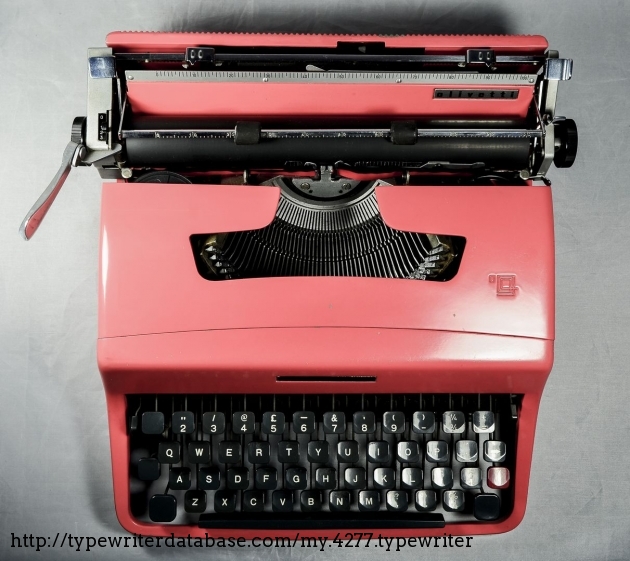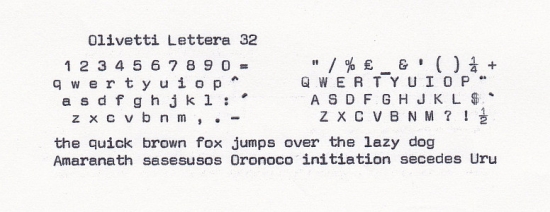Olivetti Lettera 32 Serial Number Location
Olivetti Underwood Studio 44 (1965) At first glance, you notice the size. For a portable typewriter, it’s rather large.
But once you get it on the desk, the sleek lines make it appear more accessible. Olivetti’s are known for their great curves and design. Dialux Software Download For Mac. The Studio 44 is no exception. Even the name “studio” suggests an artist at work.

A worldwide favorite of students, its also the perfect portable for everyone from poets to PTA secretaries, as advertised in one of the promotional ads. Find great deals on eBay for Olympia SM9 in. This awesome typewriter is an Olympia SM9 Portable from 1977 based on the serial number on. Olivetti Lettera 32.
This is not your standard office typewriter, but it has the solid mechanicals required for doing work, lots of work. And that’s where Olivetti has positioned this typewriter.
According to their: “When the performance of a standard typewriter is required in the space of a portable. The Studio 44 bridges the gap when a standard machine would be uneconomical and a personal portable unsuitable.” Make no doubt, they’ve designed this machine for someone who takes their words seriously. If you’re after an occasional typewriter for the letter or memo, this is not your typewriter. But like Olivetti states, it’s not so large, that you can’t move it around. Nothing about this typewriter feels flimsy.
When you strike a key, there’s a measured pace to the typebar. According to Olivetti, “the typebar movement is based on the principle of progressive acceleration.” Somehow it almost doesn’t feel mechanical, but more like an extension of your fingers.

Other typewriters feel like they’re translating your energy to levers and joints and springs. You’re working the machine. Not so with the Studio 44, which has a softness to it, and seems to mute the actual mechanicals at work. After typing for awhile, you have the sensation that inside this machine are tendons and muscles and bone. There’s an addicting quality and a bond begins to form between human and machine. Isn’t that the goal of any artist’s tool, that it becomes one with it’s user? Rolling paper into the platen is smooth and quiet.
The rollers on the paper scale are metal, and make light contact with the paper. The paper supports are a bit tricky to deploy. There’s two of them that require you to push down on the exposed part to get them to flip up. The margin stops are easy to slide into position. The carriage return lever is a two-piece construction. It hinges back for storing the typewriter in the case.
The carriage return paddle is big, making it quite easy to use and find. If you do lots of typing you’ll appreciate how easy the carriage return works. It feels smooth in your fingers and after repeat use, carriage returns come naturally and easily. It seems like a lot went into the design of the carriage return paddle. Again, it reinforces Olivetti’s mission to combine design with function.
It’s one of those small things the power user will appreciate after hundreds of pages of a manuscript. Typed characters come out bright, true and aligned.
Olivetti claims the perfect alignment is because the carriage movement is comprised of a steel tube that glides over roller bearings. A quirky design element are the carriage release levers. The one on the left is low and flat, while the right one sits up high. The purpose of this is a bit puzzling. At first, you might think they perform different functions. But, this has been the same design since the Leterra 22. Overall, when it comes down to turning out page after page of manuscript, it’s hard not to fall in love with the Studio 44.
It’s got the same great styling as the Lettera models, but with the solid feel of a standard desktop. Looking for your opinion, as you have owned or tested out many different machines, I am currently using a Smith Corona Sterling, 1952. Nice machine, but it is an elite 12 pt font that is very small. I am looking for a bigger font like PICA or a 10 point Elite font on the Olympias.
So I am looking at either an Olivetti Studio 44 or an Olympia SM9. Which would you suggest? I am using it to write first drafts of novels, short stories, and maybe some scripts. What will hold up? What is a typer’s typewriter, and if possible can you tell me what each feels like or makes them different from each other?
Can you compare the two to my SC Sterling. I believe you have reviewed it before. Thanks for your help. It appears that I’ve really lucked out on mine. A friend found my Studio 44 at a thrift store, in mint condition, for only $20 with the case. I am astounded by this.
I have sixteen typewriters, and they never look this good. I’m having a little trouble getting the E and A keys to print properly. Not sure why, but it feels like they’re a little sluggish. Gotta really hit them to get the printing curious about this ball bearing system you speak of. My has a slight lag when I push the carriage across.
Gunked up maybe? Has anyone done a proper disassembly on one of these? This is my first Olivetti and I’m eager to see how it works. Living in the southern US I never excepted to see one anytime soon. Incidentally, my serial is 498505.